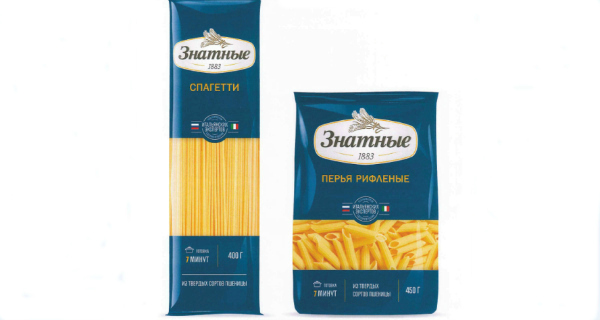
Italy is the number one pasta supplier in Russia. Despite the crisis caused by the embargo and the crisis of the rouble, in 2015 the Russian Federation imported 29,000 tonnes of Italian pasta, for a total amount of 28.6 million euro. In addition to that, at the end of October 2016 the aim of the 18th edition of World Pasta Day, which was held in Moscow, was to reinforce Russian customers’ awareness. We discussed this point with Mauro Moscardi, Group CFO and Director of four Russian subsidiaries at F.lli De Cecco di Filippo – Fara San Martino Spa.
Mr. Moscardi, we would like to know your point of view on this event: how important is it for Italian companies like De Cecco?
These kinds of events develop the culture and the consumption of pasta, which is our product. For this reason, we like these events. Moreover, the pasta industry is almost exclusively Italian and pasta is a symbol of Made in Italy products. This is particularly true when it comes to high-quality pasta as De Cecco is a world leading company in this sector.
Which trends could you observe?
Trends are reassuring. We would like to underline that the consumption of pasta worldwide is increasing today, both for nutritional reasons and because of a unique feature of pasta: it is one of the few food products that has a long shelf life and, for this reason, it can be easily exported. To develop this idea a bit further, we could say that Italy could completely absorb the increasing worldwide demand. We would also like to add that there is an increasing demand for high-quality pasta, as durum wheat pasta – in other words, the Mediterranean diet pasta – is the most appreciated type of pasta because of its excellent nutritional qualities. We expect an increase especially in emerging markets, where the most part of the global population is concentrated.
Which international partners are the most interested in Italian pasta?
All emerging markets, without forgetting the markets that have already emerged, such as China, the biggest market in the world.
The Russian market is still the third for the consumption of pasta, just after Italy and the United States. What is the incidence or the market share of Italian pasta in Russia?
The Italian product exported to Russia accounts for about 5%, but we have to say that a large part of this product is branded for the Russian market and the brand names sound Italian but are unknown in Italy. The export value with Italian brands is not higher than 2%.
What is the amount of De Cecco sales in the Russian market and which volume and value variations can be observed throughout 2016? How many tonnes do you produce?
We locally produce and sell about 60 million kilos of pasta with Russian brands and we sell about 1.4 million kilos of imported De Cecco products.
Which brands are present in the Russian market, in addition to the De Cecco brand? Besides pasta, do you produce other products in Russia?
In Russia, we only produce pasta and we have three brands: Znatnie, Saomi, and Extra M. We also produce and sell private labels for Russian retail chains.
In which Russian chains are you present with your products? Do you also provide Russian private labels?
We are present in all main Russian chains of the large-scale retail trade such as X5, Magnit, Dixi, OK, Lenta, and Metro. As I said, we locally produce and sell Russian private label products, too.
